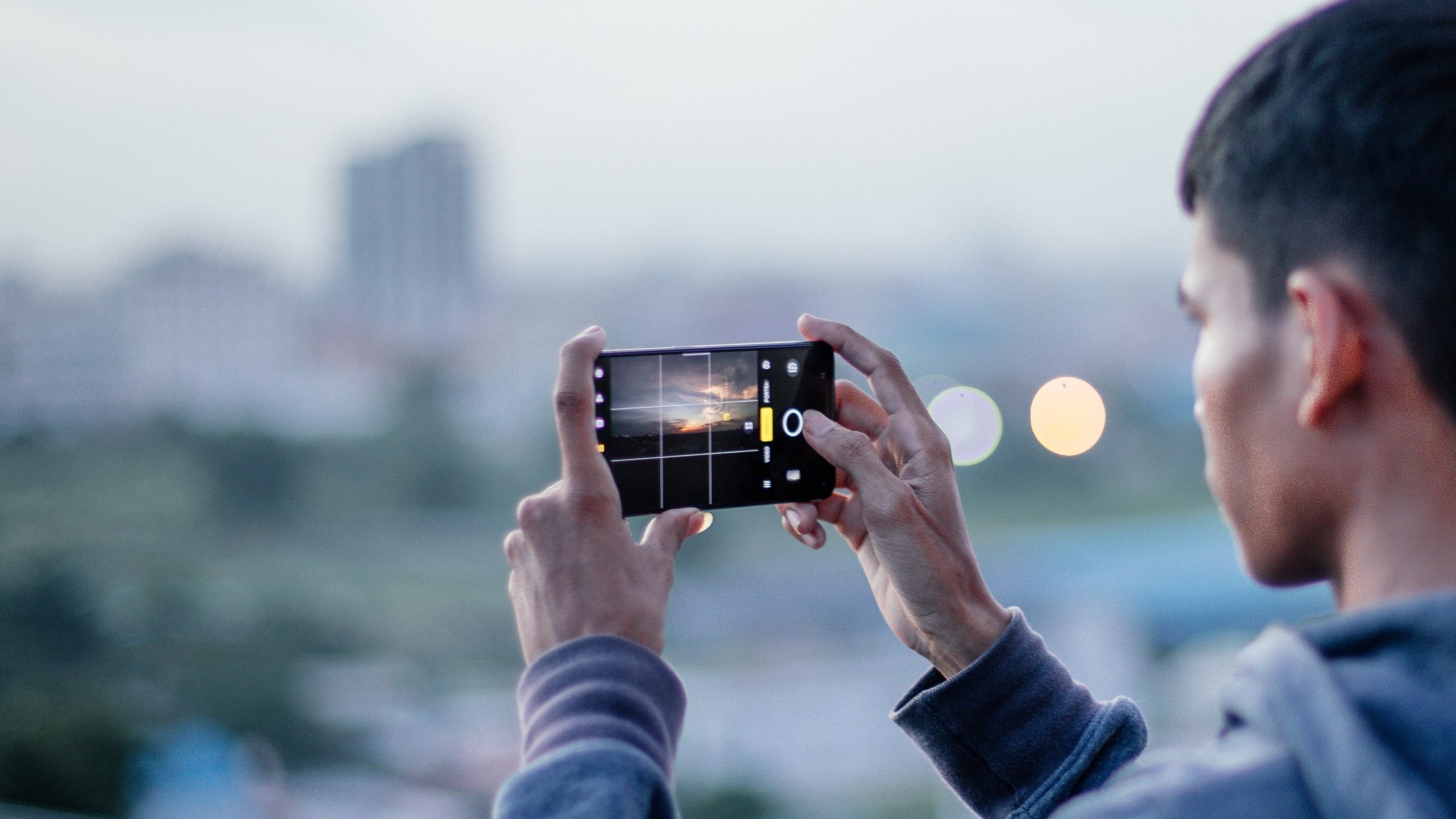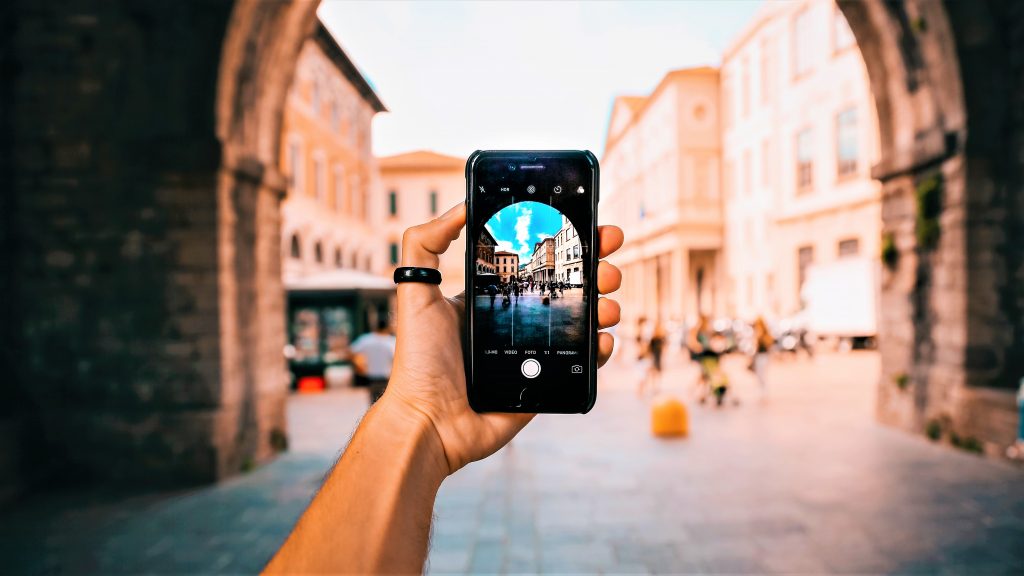With the continuous progress of technology in the field of photography, comes the pursuit to take eye catching and breathtaking photos. In this modern age, Mobile Phones are extremely capable of taking jaw dropping pictures. Here are phone photography easy tips and tricks that would help you make that next Instagram post sensational!
Cameras are accessible to everyone! Everybody is able to capture photos with a single tap thanks to its availability on every smartphone. To capture excellent photos, the main things to take note of are lighting, composition, and the PRO-mode. Knowledge on these three things would definitely up your photo capturing game!
Table of Contents
Understanding the Fundamentals
In Photography, there are key concepts and theories that translate well into practice. Lighting and Composition are the easiest of these to grasp. To better equip your journey in photography, a simple breakdown of these is given below.
Lighting
Photography literally is drawing with light. The word was coined by Sir John Herschel from the Greek words : phōtós meaning “light” and graphê meaning “drawing or writing”. [1]
Photography is the art or process of producing images by the action of radiant energy and especially light on a sensitive surface (such as film or an optical sensor). [2]
This concept is important towards the overall mood of the photo. Happy, celebrating, or hopeful? A bright photo would definitely portray this emotion! A darker photo could be used to portray solitude and sorrow.
By understanding how light touches a subject, you would also be able to portray depth. This would be noticeable due to the fact that a subject would have shadows that are distinct from its background. Even with mobile phone cameras, this still applies!
Phone Photography Easy Tips With Lighting : As a general rule of thumb, always try to take photos in well lit areas. Taking a photo during the day would yield better results than photos taken during the night.
Dive deeper into lighting with our Article : Lighting in Photography
Composition
A criteria for a breathtaking photo is its attention to detail. An excellent composition would surely make your audience captivated.
There are countless rules and concepts that could improve your mobile photography. We’ll focus on the easiest and quickest to master! First step to becoming better is to turn on your gridlines. This would give you a sense of how to position your phone to best capture a scene or a subject.

Ever heard of the rule of thirds? This is the type of composition in which the subject is positioned at the intersection of a horizontal and vertical grid line. This makes the audience move their eyes towards a certain area of the photo then outwards to the scenery in the image. Knowledge on the rule of thirds would definitely make your photos stand out more!
Have you encountered a photo that draws you in towards a certain point by the use of straight lines? This photo makes use of the leading lines concept. Every time you go out on the streets, straight lines are really visible. Road pavements, poles, and edges of buildings are straight lines that you could use when taking street photos. Try this out the next time you think of pulling out your phone to capture a moment!
As humans, we are generally drawn to balance. This next concept in composition would come off as an instinct and therefore easy to execute! Symmetry in photos generally takes a scene or an area and divides it into two identical parts. Applications of symmetry could be at places with bodies of water and mirrors. Note that if you instinctively see that you could divide a scene into two apply this concept to capturing that photo!
Phone Photography Easy Tips With Composition : Turn on your gridlines, place your subject at the intersections of these lines, use straight lines from the environment to point towards a subject, and instinctively divide a scene with symmetry.
The Pro-Mode
The ability to manually control the properties of your photos would make your images look good from the get go. Most Apple and Android phones already have the Pro-Mode feature available on the default camera app. Simply swipe your way through the interface to reach the Pro-Mode capture setting.
On older phones, this feature is not directly available thus another camera app should be installed. Just head over to the App Store or Google Play Store and search for “ProCam”. This would give you access to the Pro-Mode and you’re on your way to more beautiful pictures.
What’s inside? In the Pro-Mode setting, you’ll be able to see the options to adjust the following common properties : WB, F, S, and ISO.
Pro-Mode Properties:
White Balance (WB): This refers to how cool or warm your photo will be. The lower the value is, the cooler(more blue) the picture will be. The higher, the warmer(more orange) the photo will be.
Aperture (F): This sets how much light is allowed to pass through the lens. A higher f/stop (f/1.8) would let in more light thus making the photo brighter. A lower f/stop (f/16) would let in less light making the photo darker. This also affects the depth of field – how blurred the background is. Test it out yourself and see the difference!
Shutter Speed (S): This is how fast the camera shuts its lens to capture the photo. The slower the shutter speed, the longer it will be able to capture light from the surroundings. Note that taking photos at slow shutter speeds requires a steady hand so it’s generally advisable to shoot at shutter speeds of 1/100 of a second.
ISO: This is the camera’s sensitivity to light. The lower the ISO is, the less is its sensitivity. This generally could be seen as grains on your photos. Grainy photos are captured at high ISO values.
Phone Photography Easy Tips With The Pro-Mode: Experiment and see for yourself how adjusting the different properties of the photo would affect its output. Combine the variation of different settings to see what settings are perfect for a specific situation. This is a very rewarding skill to master towards your goal of achieving more majestic photos!
Pursuit of Perfection
Like all things, one does not simply become a professional overnight. It’s true that you now have the ideas that jumpstart your photography journey. Remember that these alone are not enough. Be open in taking the time to hone your craft. Go out and take photos of nature, people, cars, or anything that would spark your passion.
With grasping how lighting works, practice taking photos using both natural and artificial lighting. Natural light comes from the sun. Both Professional and Amateur photographers find it best to use natural light for their photos. This is due to the fact that the setup time when utilizing natural light is shorter than setting up when using artificial lighting.
On the other hand, Artificial lighting uses studio lights typically in indoor settings. More fundamentals regarding lighting come into play with the use of artificial lighting. If this interests you, check out : Lighting in Photography.
Next, Composition takes a lot of time to master. The more time you spend on your camera the more you’ll be able to easily frame your photos. By often using the theories of composition, the photographer surely develops an instinct in framing.
Start Small
Focus on a specific niche that sparks your interest the most. Looking to take photos of scenery, streets, or people? Take your time focusing on a specific field in photography. The skills you develop in one niche translate well when you decide to transition to another.
Here’s a list of some photography niches to get you started:
- Portrait Photography
- Landscape Photography
- Street Photography
- Event Photography
- Still Life Photography
After choosing which field you’re passionate about, everything else will follow. The techniques you gather as you journey in photography will stick. If you choose to try out other niches, the fundamentals of photography stay the same.
Let this article about Aperture in Photography guide you! Learn about aperture, a key pillar of the exposure triangle in photography.
Level Up Your Photos
An efficient tool to upgrade the look of your photos is through editing and post-processing. There are various properties in an image that are controllable with different editing softwares. Here at PhotogpediA, we prepared guides to free-to-use mobile editing apps.
Check out these blog posts to have a rundown of the different properties and tools to add to your editing and post-processing knowledge. Post-processing your photos gives you the option to achieve looks not readily available from the point and click. This skill is necessary for photographers to bring out a distinct style and mood to their photos.
Take Insights
Another tip to be a pro in photography is to ask for help. Be open to constructive criticisms from experienced photographers. Ask more about the field as well as tips regarding your struggles. No man is an island. Develop connections and ask for mentorship from others.
Take each step one at a time and when you’re satisfied take more challenges to develop your skill. Most photographers are ecstatic to share their knowledge of the craft to others and surely will entertain your questions.
Gather Inspiration
Work of professional photographers can stand as your benchmark or goal as a starting photographer. Their work can be viewed online. Instagram for example showcases photos by photographers all around the globe. Utilize their search engine by inputting hashtags related to photography. You can also focus on a niche you like such as street photography or landscape photography.
Some photographers also provide behind the scenes (BTS) footage of their work flow. These BTS are a great medium for learning. Mimic how they set up their subject and lights. Have a good feel of their process and adapt what you think is feasible for you.
Last But Not The Least
Remember the saying, “Practice makes perfect”? Believe that it’s true! People who dedicate the time and effort towards a certain skill eventually become skilled at it. Photography, like any artform, requires practice and lots of trial and error to yield the perfect results. The more often you take your mobile phone out to capture a photo, the faster you will be at mastering these Easy Tricks To Be A PRO In Phone Photography.
Sources:
[2] Merriam-Webster Dictionary


1 Comment
You made some decent points there. I looked on the web for the problem and located most people will go along with along with your website.